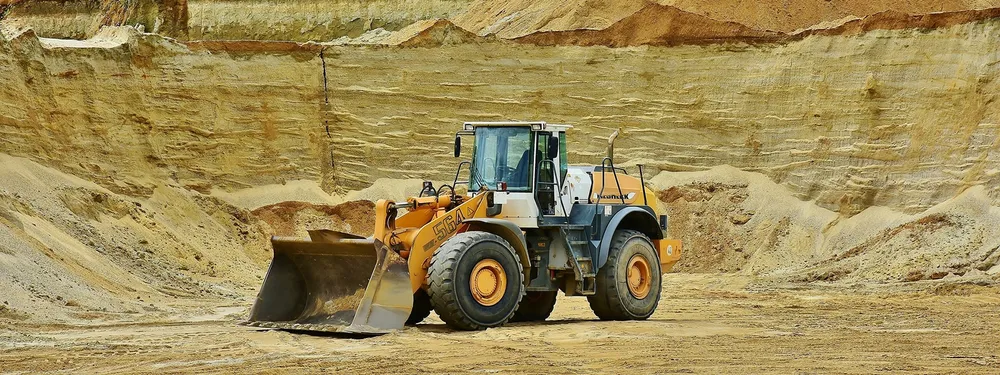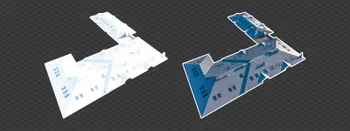Is Automation the Future of Mining?

Automation – the new hot topic in the mining industry. A recent survey by “Mining IQ” showed that 77% of mining specialists think that automation is a high priority, and 40% of these specialists say that automation is “now more important than ever”. While big mining companies are seeking mining automation technologies for the operational and financial efficiencies they offer, employees fear being made obsolete by innovations such as driverless trucks and trains – future of mining. Remote monitoring and control of equipment allows miners to automate industrial processes like blasting, drilling, and transportation.
Complexity of the mining industry
Mining is a complex industry. Extracting raw material in different shapes, sizes, chemistries from the earth’s crust and transforming it into a standardized high quality final product is a challenging process. Not to mention the fact that it involves huge material movement, scheduling, synchronization and tracking — all on a large scale.
Automation plays an important role in the mine environment. Though, for the majority of those in the mining industry, automation is a much larger concept than regulatory systems, supervision and instrumentation. Automation can cover the geological/geographical information systems software to autonomous machines, and from mine execution software to optimization or expert systems.
With global demand for an array of natural resources only increasing, mining companies must work both smarter and harder to unearth and distribute these commodities around the world. As a result, the future of mining lies within the technology of automation. Let’s talk about the ways of automation more.
Driverless vehicles and automated sorting
Automated vehicles are currently being developed and utilized for a wide variety of functions. Companies such as “Google”, “Kia”, “Volvo” have all developing automated transportation for consumers. Driverless mine trucks operate above ground, especially in Australia, and are powered by GPS technology. Researchers in Queensland, Australia, are currently looking to take the automated car underground. There’s plenty of reason to be excited about that: driverless underground vehicles will go a long way in making mines more cost-effective, efficient, and safer than ever before.
Over the 80-year history of sensor-based ore sorting, there have been several types of sorting equipment developed: channel-type, bucket-wheel type, and cone-type. The most prevalent technologies being used in these systems are electromagnetic (EM) and X-ray Transmission (XRT). This automated technology is faster and more efficient than its manual counterpart, as sensor-based sorting systems boast the ability to sort through 200 tons of particles per hour per machine. An adoption of these technologies in the mineral mining industry at large would be nothing short of revolutionary.
Data analysis – future of mining
From exploration to delivery to everything in between, the digitization of mining will streamline the all processes while making the industry safer than ever. Advanced sensing technology and real-time operational data will assist in a faster decision-making process and allow to be more transparent with local partners, while predictive algorithms will enhance the precision and accuracy of future projects.
Pixpro is keeping up with technologies
Along with developing technologies, Pixpro team is improving its software too. We have created the Pixpro – photogrammetry based software solution, enriched with a wide range of measurements relevant for the mining industry. Software facilitates the planning of material dislocation, acquiring a detailed view of the explorable surface, as well as provides accurate 3D measurements and calculations that lead to more exact forecasts, help to make more realistic workflow plans and projects.
If mining companies around the world want to continue to meet the growing global demand for their product, they must embrace automation sooner rather than later. The result will be a more profitable, efficient, and safer industry.
Related Blog Posts
Our Related Posts
All of our tools and technologies are designed, modified and updated keeping your needs in mind

Viltrox 14mm vs. Pergear 14 mm Lens – Choosing for Interior Photogrammetry
Ultrawide-angle lenses are most commonly used in photogrammetry for interior scanning. I am planning to do an interior-type construction site scan, so I need a lens for my Sony full-frame camera. There are plenty of premium wide-angle options, but I need something that provides the best image qualit

Gaussian Splatting vs. Photogrammetry
Every few years, something new shows up online claiming to “revolutionize” 3D reconstruction. A while back it was NeRFs. Now it is Gaussian splatting — with endless YouTube clips of people walking through photorealistic 3D scenes that seem to render instantly.

Photo Dynamic Range - Real Life Tests and Advice
Dynamic range is an inescapable term when talking about digital photo or video capture. Our human vision has an incredible ability to adapt, allowing us to perceive both very dark and very bright scenes. When a digital imaging sensor or even a chemical negative captures a scene frozen in time, it is
Ready to get started with your project?
You can choose from our three different plans or ask for a custom solution where you can process as many photos as you like!
Free 14-day trial. Cancel any time.
Welcome to Pixpro
Sign in
And access your account.
.svg@webp)